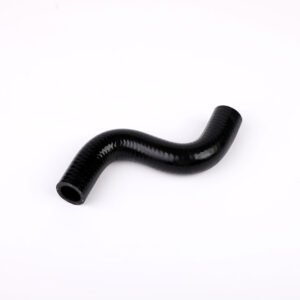Hose Radaitheora
Cad é Hose Radaitheora?
Is é an píobán radaitheora an cainéal le haghaidh scaipeadh uisce fuaraithe, lena n-áirítear píobán inlet uisce agus píobán asraon uisce. I breise, trastomhas mór é píobán rubair, a iompraíonn chuisnithe innill idir an t-inneall agus an radaitheora, agus ansin filleann sé ar an gcaidéal uisce. Mar chuid de ghnáthchothabháil, seiceáil na píobáin radaitheora chun a n-ionracas a chinntiú. Éilíonn comharthaí damáiste nó meathlaithe cothabháil choisctheach, atá níos éasca agus níos lú millteach ná roghanna eile.
Cad a tharlaíonn má bhriseann an píobán?
Mar gheall ar an teocht ard an uisce fuaraithe, tá na píobáin radaitheora a úsáidtear le fada seans maith go crack agus damáiste. Agus is cúis eile é creathadh an innill chun píobáin radaitheora a chur i bhfeidhm.
Seiceáil na píobáin radaitheora go minic is nós maith é. Ionas go seachnófar ar an mbealach seo sceitheadh uisce fuaraithe de bharr scoilteanna agus damáistí ar an píobán radaitheora. I gcás crack nó damáiste ag deireadh an píobáin radaitheora, is féidir an deireadh a ghearradh amach go díreach. Agus ansin is féidir an píobán a phlocáil ar ais. I breise, ní mór an caipín radaitheora a dhíscriú chun brú iomarcach an chórais fuaraithe a sheachaint. Má tá an crack beag, is féidir an crack a bheith brataithe go díreach le gallúnach.
Má tá an chuid lár an píobáin scáinte nó damáiste, ní mór cuid den uisce fuaraithe a dhraenáil ar dtús. Tar éis an tsaoil tá an t-uisce ar an píobán radaitheora tirim, úsáidí téip nó páipéar plaisteach fillteann an chuid damáiste chun an fhadhb a réiteach go sealadach. Má tá an crack ar na píobáin radaitheora ró-mhór, is dócha go mbeidh uisce fós ag sceitheadh tar éis é a cheangal. Ag an am seo, Caithfidh tú an clúdach umar uisce a oscailt chun an brú sa chainéal uisce a laghdú agus an sceitheadh uisce fuaraithe a laghdú.
Ag taispeáint go léir 4 torthaí



